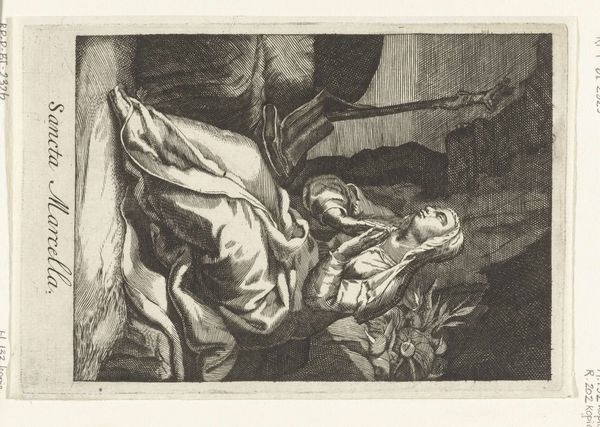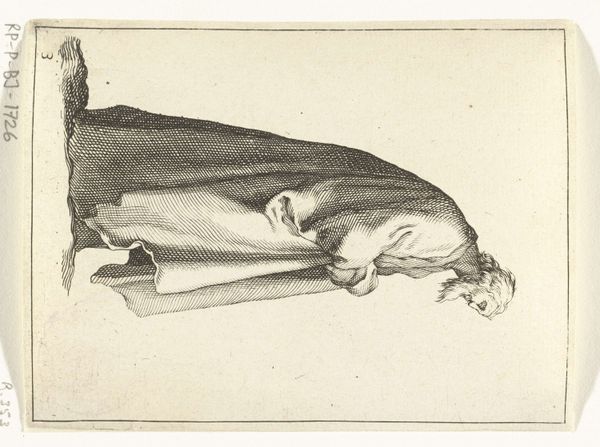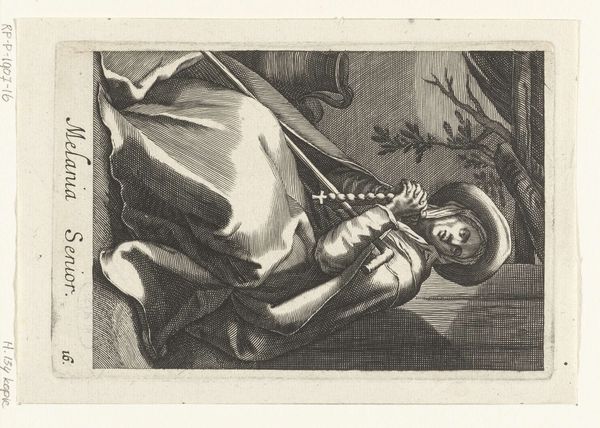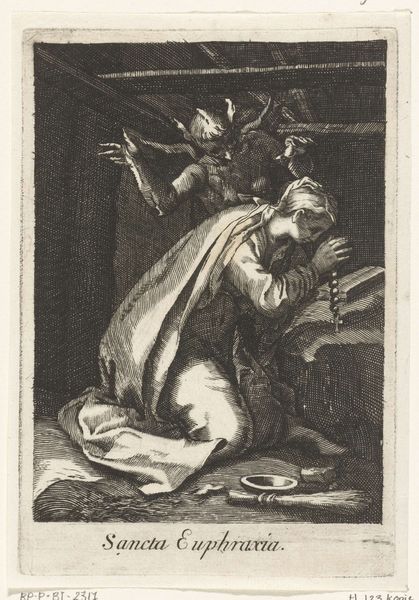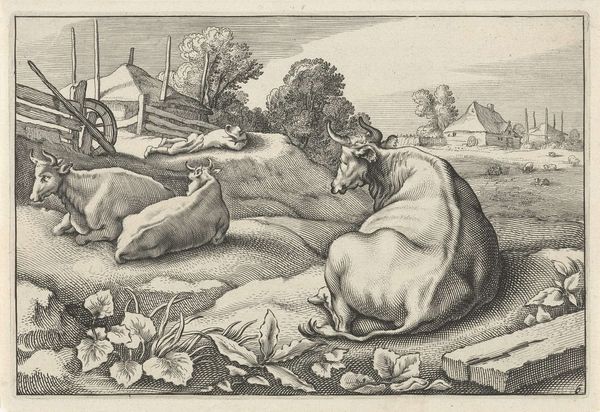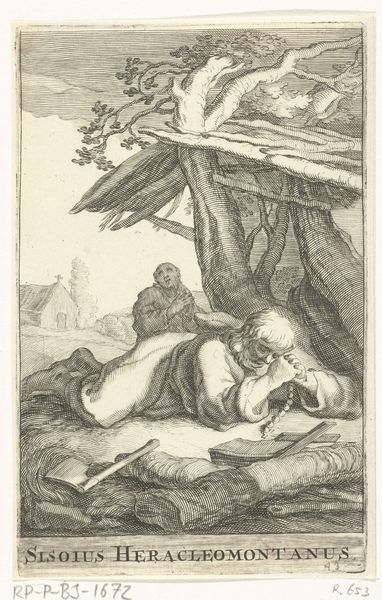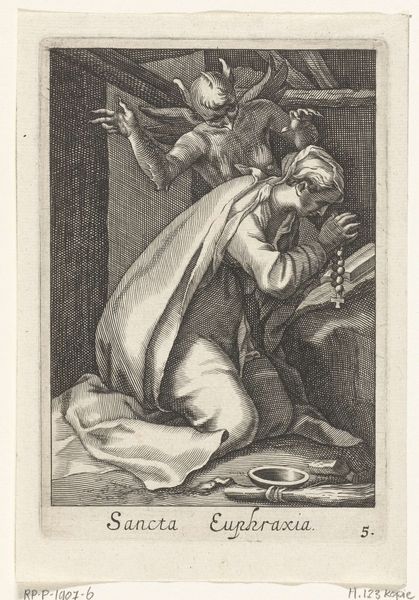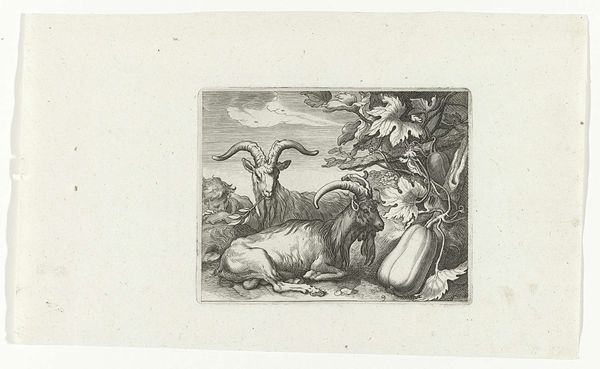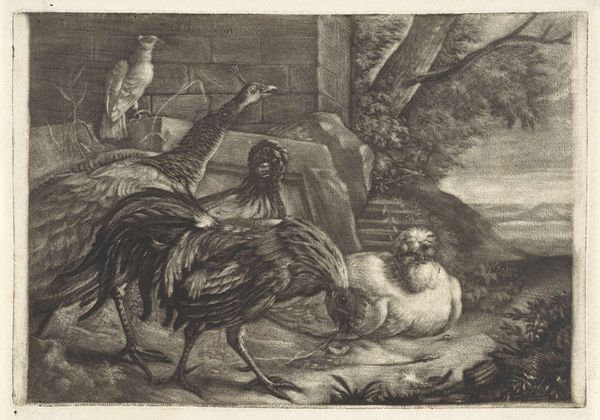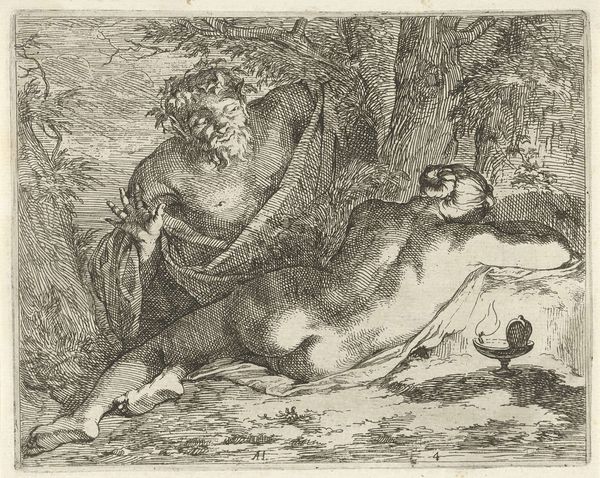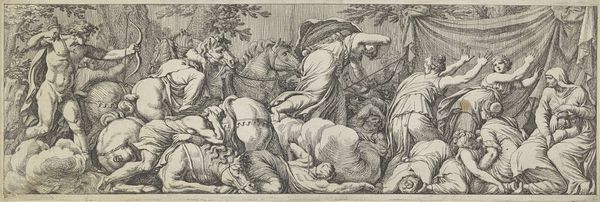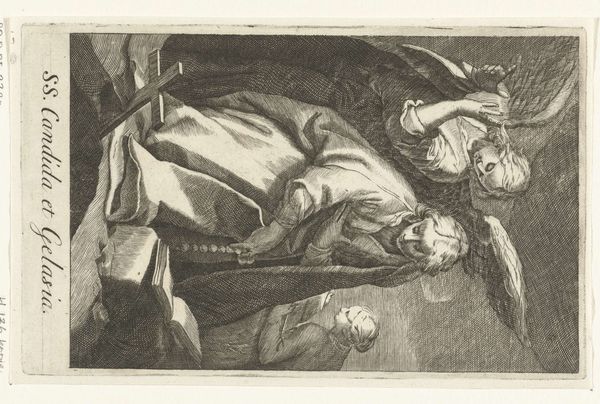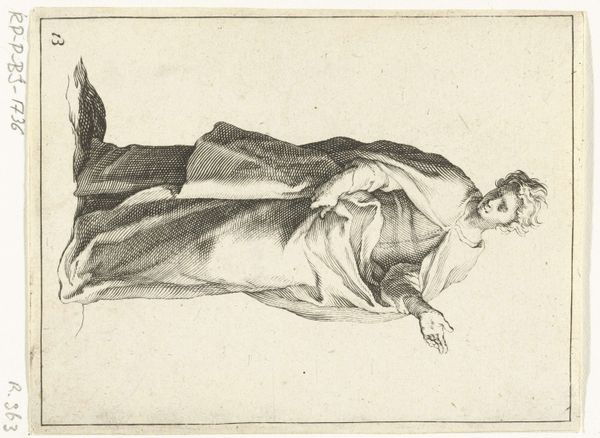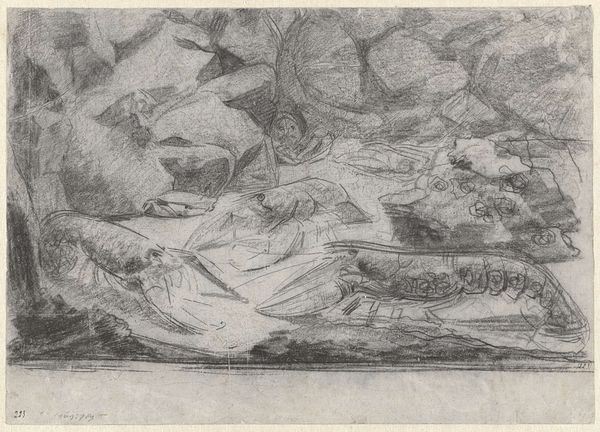
intaglio, engraving
#
allegory
#
baroque
#
intaglio
#
mannerism
#
nude
#
engraving
Dimensions: height 43 mm, width 132 mm
Copyright: Rijks Museum: Open Domain
Bartholomeus Willemsz. Dolendo created this engraving, Venus en Amor, around the turn of the 17th century. The entire image is created through the controlled removal of metal, leaving behind raised lines that hold ink. It’s a process demanding precision and control. The engraver uses tools to cut lines into a metal plate, which is then inked and printed. It’s indirect; you’re not drawing on paper, but working a matrix that will carry the image. This allows for multiple identical images to be produced, unlike unique paintings. Consider the labor involved in this traditional printing method. The density of the lines suggests considerable time spent cutting the plate. This labor intensiveness is a characteristic of early printmaking. The commercial nature of the print is reflective of the economy in which the artist was operating. Prints like these democratized art, making images accessible to a wider audience than paintings ever could. The act of engraving, therefore, isn't just about artistic skill, but about the social and economic context of art production.
Comments
No comments
Be the first to comment and join the conversation on the ultimate creative platform.
